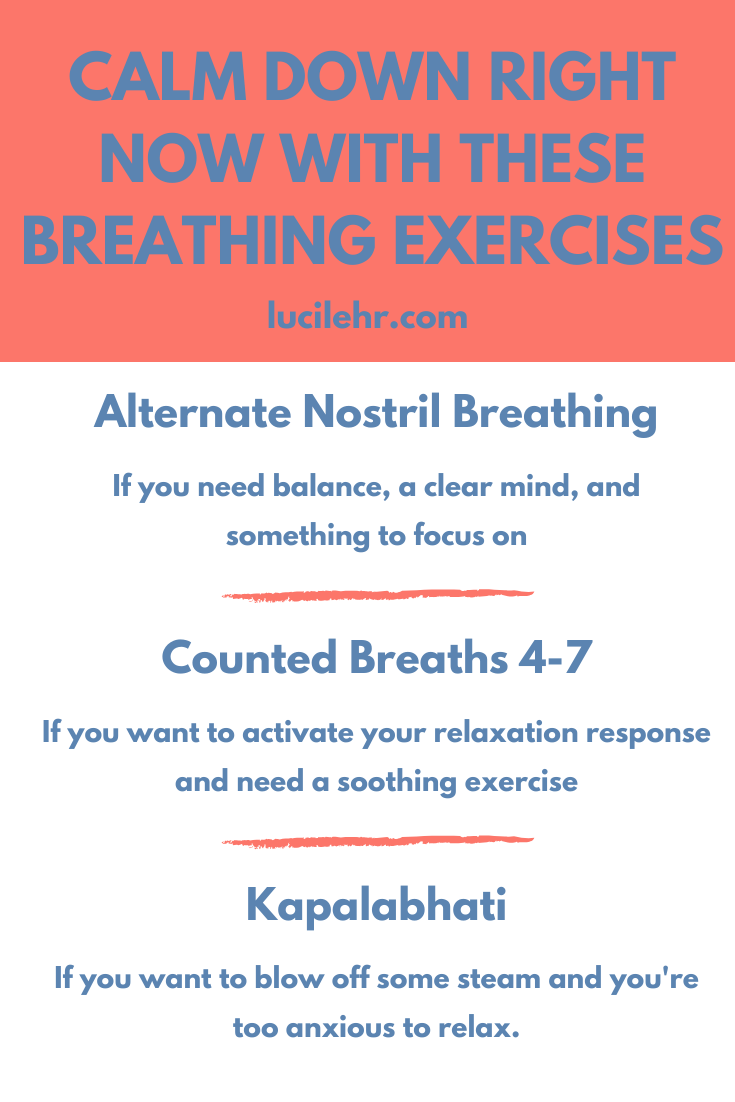
Meditating while eating is an effective way to curb the urge to overeat and gain more control over your life. Focus on what you eat and not the food. Remove all distractions from your eating process so you can focus fully on it. It doesn't matter if you eat the same food each day, as long as it is healthy. Try new foods if you struggle to control your impulses when eating.
To start meditating while eating, sit in a comfortable position. Take ten deep breaths and notice the chocolate bar in your hand. Keep an eye on the chocolate bar. Its texture, shape and weight will be obvious. Also, notice how your mouth moves when you bite it. After a while, you will feel satisfied. You will also feel more in control of the food you eat as you will be aware of your choices.

To get started with meditation for eating, you can visit Headspace.com. The free 10-day course provides basic mindfulness principles as well as several exercise options. After finishing the course, you can begin enjoying the benefits of meditation for food. You can also use the 30-session mindful food program to help you get started with meditation. This program is meant to teach you how meditation can be done while you eat.
Meditation for eating means that you relearn how to eat and make changes. It can also improve self-control and reduce anxiety by preventing you mindless eating. These are just a few of the many benefits that this meditation can bring to your food. Mindfulness will help you enjoy your food without feeling guilty. It is an excellent way to begin a meditation while eating. It is a great method to practice mindfulness as you eat.
Meditation for eating allows you to eat mindfully and observe your surroundings. When you eat, it is important to be aware of your surroundings as well as observe yourself. Using your senses will help you to eat mindfully and control your portions. You will also be able focus on the food you eat and not feel hungry. It will be a good practice that can have a positive impact upon your health. You will enjoy eating more and feeling more satisfied.

The benefits of this technique are numerous. It's a great way for you to improve your health. You will be more likely to eat mindfully if you practice mindfulness. This practice will help you relax and focus, as well as increase your enjoyment of your food. Meditation eating has the most important benefit: it increases your concentration and attention span. This is why it's important to enjoy your food.
FAQ
What is the difference in calorie and kilocalories?
Calories refer to units that are used for measuring the energy in food. Calories are a unit of measurement. One calorie equals one degree Celsius of energy to raise water temperature by 1 gram.
Kilocalories can also be used to refer to calories. Kilocalories are measured in thousandths of a calorie. 1000 calories are equal to one kilocalorie.
How to measure body fat?
A Body Fat Analyzer (BFA) is the best method to measure bodyfat. These devices are used to measure body fat for people who want weight loss.
What can you do to boost your immune system?
The human body is made up of trillions and trillions of cells. Each cell is responsible for creating organs and tissues with specific functions. One cell is replaced by another when it dies. Cells communicate with one another using chemical signals called hormonal hormones. All bodily processes are controlled by hormones, including metabolism and immunity.
Hormones refer to chemicals produced throughout the body by glands. They circulate through the blood stream and act as messengers to regulate how our bodies function. Some hormones come from the body and others from outside.
Hormone production occurs when hormone-producing cells release their contents into your bloodstream. Once hormones become active, they move throughout the body until reaching their target organ. Some hormones are only active for a brief time. Others hormones are more active and have a longer life expectancy. They can still influence the body's functions long after they are eliminated from the bloodstream.
Some hormones are produced in large quantities. Others are made in small quantities.
Some hormones only are produced during certain periods of life. The production of estrogen can occur during puberty and pregnancy, as well as menopause and old age. Estrogen helps women develop breasts, maintain bone density, and prevent osteoporosis. It helps to stimulate hair growth and maintains skin's softness.
How much should I weigh for my height and age? BMI chart & calculator
To determine how much weight loss you need, a BMI calculator is your best friend. A healthy BMI range should be between 18.5 and 24,000. If you want to lose weight, then you should aim to drop about 10 pounds per month. Simply enter your height, weight and desired BMI into the BMI calculator to calculate it.
Check out this BMI chart to determine if you are overweight or obese.
What is the difference between a virus and a bacterium?
A virus, a microscopic organism, is incapable of reproducing outside its host cell. A bacterium is a single-celled organism that reproduces by splitting itself in two. Viruses are small, around 20 nanometers in size. Bacteria are much larger, at 1 micron.
Viruses are often spread through contact of infected bodily fluids like saliva, urine or semen. Bacteria is usually spread directly from surfaces or objects contaminated with bacteria.
Viral infections can be transmitted through skin cuts, scrapes and bites. They may also get into the body through the nose and mouth, eyes, ears or rectum.
Bacteria can get into our bodies through cuts, scrapes and burns, insect bites, or other skin breaks. They may also be introduced into our bodies through food and water as well as soil, dirt, dust, and animals.
Both viruses and bacteria can cause illness. But viruses can't multiply within their hosts. Viral infections can only cause diseases in living cells.
Bacteria can spread within the host and cause illness. They can infiltrate other parts of the body. They can even invade other parts of the body, which is why antibiotics are necessary to eradicate them.
Statistics
- According to the Physical Activity Guidelines for Americans, we should strive for at least 150 minutes of moderate intensity activity each week (54Trusted Source Smoking, harmful use of drugs, and alcohol abuse can all seriously negatively affect your health. (healthline.com)
- The Dietary Guidelines for Americans recommend keeping added sugar intake below 10% of your daily calorie intake, while the World Health Organization recommends slashing added sugars to 5% or less of your daily calories for optimal health (59Trusted (healthline.com)
- nutrients.[17]X Research sourceWhole grains to try include: 100% whole wheat pasta and bread, brown rice, whole grain oats, farro, millet, quinoa, and barley. (wikihow.com)
- In both adults and children, the intake of free sugars should be reduced to less than 10% of total energy intake. (who.int)
External Links
How To
What does the word "vitamin" mean?
Vitamins are organic compounds naturally found in food. Vitamins are necessary for us to absorb nutrients in the foods we consume. Vitamins are not made by the body, so they must be obtained through food.
There are two types vitamins: water soluble or fat soluble. Water soluble vitamins dissolve easily in water. You can find vitamin C,B1 or thiamine, B2 or riboflavin and B3 or niacin, B3/niacin, B6/pyridoxine, folic Acid, biotin and pantothenic Acid as examples. Fat-soluble vitamins are stored in the liver, fatty tissue and kidneys. Vitamin D, E, K and A are some examples.
Vitamins are classified according their biological activity. There are eight major vitamin groups:
-
A - essential for normal growth and maintenance of health.
-
C - essential for nerve function and energy generation.
-
D - essential for healthy bones, teeth, and gums.
-
E is required for good vision and reproduction.
-
K - Required for healthy nerves and muscles.
-
P - essential for strong bones, teeth and tendons
-
Q - Aids digestion and iron absorption
-
R is required for the production of red blood cells.
The recommended daily intake (RDA), of vitamins varies with age, gender and physical condition. The U.S. Food and Drug Administration, (FDA), sets the RDA value.
For adults 19 years and over, the RDA of vitamin A is 400mg per day. Because it is essential for the development of the fetus, pregnant women should consume 600 micrograms per daily. Children ages 1-8 require 900 micrograms per day. Infants under one year of age require 700 micrograms per day, but this amount decreases to 500 micrograms per day between 9 months and 12 months of age.
Children aged between 1-18 years require 800 micrograms of sugar per day, while overweight children need 1000 micrograms. Children who are underweight receive 1200 micrograms every day to meet their nutritional requirements.
Children between 4 and 8 years old with anemia will need 2200 micrograms daily of vitamin C.
2000 micrograms is the minimum daily intake for adults over 50 years old to maintain good health. Due to their increased nutrient needs, pregnant and breastfeeding women need 3000 micrograms daily.
Adults over 70 need 1500 micrograms daily, as they lose 10% of their muscle every ten years.
Women who have been pregnant or are lactating require more than the RDA. Pregnant mothers need 4000 micrograms per daily during pregnancy and 2500 after giving birth. Breastfeeding moms need 5000 micrograms each day when breastmilk production occurs.